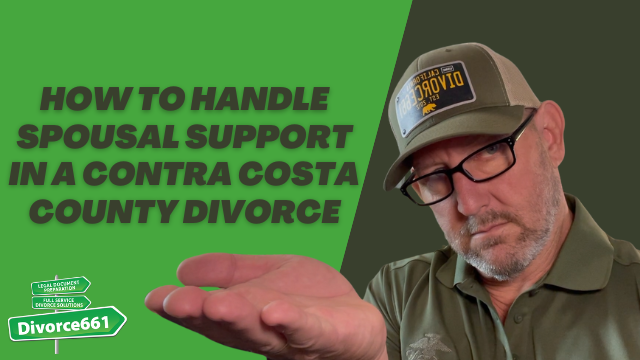How to Handle Spousal Support in a Santa Clarita Divorce
If you are going through a divorce in Santa Clarita, one of the most common questions I hear is “How does spousal support work?” Whether you will be paying or receiving support, understanding how it is determined and how it fits into your divorce agreement will help you make better decisions and avoid surprises.
Types of Spousal Support in California
In California there are two main types of spousal support you should know about:
- Temporary spousal support — Paid while the divorce is pending. This is typically calculated using a formula that looks at each party’s income and expenses.
- Long-term spousal support — Part of the final judgment and can be ordered for a set period or indefinitely depending on the circumstances. There is no single formula for this; the court considers multiple factors to reach a fair result.
How Temporary Spousal Support Is Calculated
Temporary support is usually more predictable because most courts use a standard method to estimate what each spouse needs and can pay while the case is pending. The calculation typically compares both spouses’ incomes and relevant monthly expenses to determine a fair interim payment.
Key points about temporary support:
- It is intended to help preserve the parties’ standard of living during the divorce process.
- It can be changed if income or expense circumstances change before the final judgment.
- Temporary orders are separate from what the court may order at the end of the case.
Long-Term Spousal Support: What Courts Consider
For long-term or permanent support, judges consider a range of factors to determine whether support is appropriate and, if so, how much and for how long. The focus is fairness and the realistic ability of each party to support themselves after the marriage ends.
Common factors include:
- Length of the marriage
- Earning capacity and current income of each spouse
- Standard of living established during the marriage
- Age and health of both spouses
- Contributions to the marriage, including homemaking and support of a spouse’s career or education
- Whether one spouse needs time to obtain education or training to become self-supporting
There is no exact formula for long-term support. Instead, courts aim for a fair outcome based on the totality of circumstances, or spouses reach an agreement themselves and present it for judicial approval.
A Real Example from Santa Clarita
We recently helped a couple in Santa Clarita reach an agreement where one spouse would receive support for a limited period while they went back to school. The agreement spelled out the duration and conditions, and the court approved it without issue. That kind of clarity in a settlement helps avoid future disputes and creates predictability for both parties.
“We included this clearly in their settlement and the court approved it without issue.”
How to Reach a Fair Agreement Without Court Drama
It is often possible to resolve spousal support issues without a contested court hearing. A well-drafted agreement that clearly lays out the amount, duration, payment method, and termination conditions can be submitted to the court for approval. Benefits of an agreed solution include:
- Lower cost compared to prolonged litigation
- Greater control over terms and timing
- Faster resolution and less emotional stress
When drafting an agreement, be sure it meets court requirements and includes details such as start and end dates, modification and termination conditions, and how payments will be made.
Practical Tips for Paying or Receiving Support
- Gather accurate income documentation and a realistic budget of monthly expenses.
- Discuss whether support should be temporary, short term, or longer to allow for retraining or education.
- Put clear end dates or review points in the agreement so both parties know when support will end or be re-evaluated.
- Think about enforcement and record keeping: maintain clear records of all payments and communications.
- Consult a tax professional about the tax implications of support in your specific situation.
Next Steps: Getting Help with Spousal Support in Santa Clarita
If you need help calculating support, exploring fair options, or drafting a settlement that meets court requirements, I can help you find a solution that is fair, simple, and tailored to your situation. Services can include accurate calculations, a clear written agreement, and court-approved filings without the need for appearances or high attorney costs.
Visit divorce661.com and schedule a free consultation to learn your options and get step by step assistance with spousal support in a Santa Clarita divorce.



